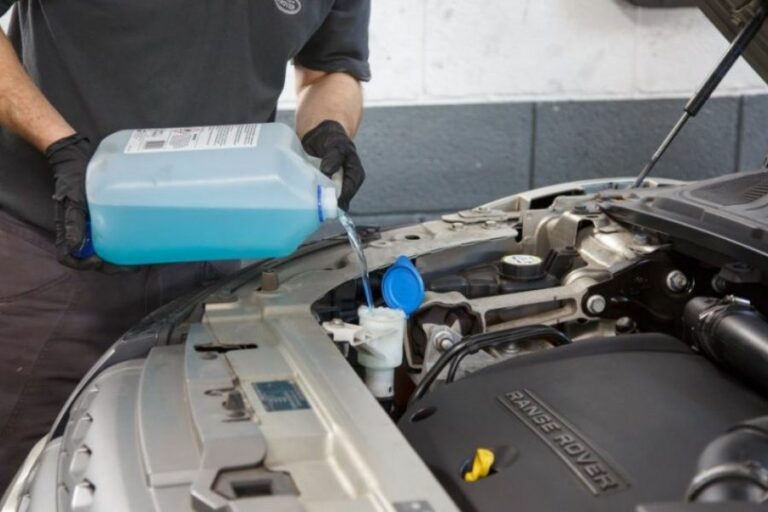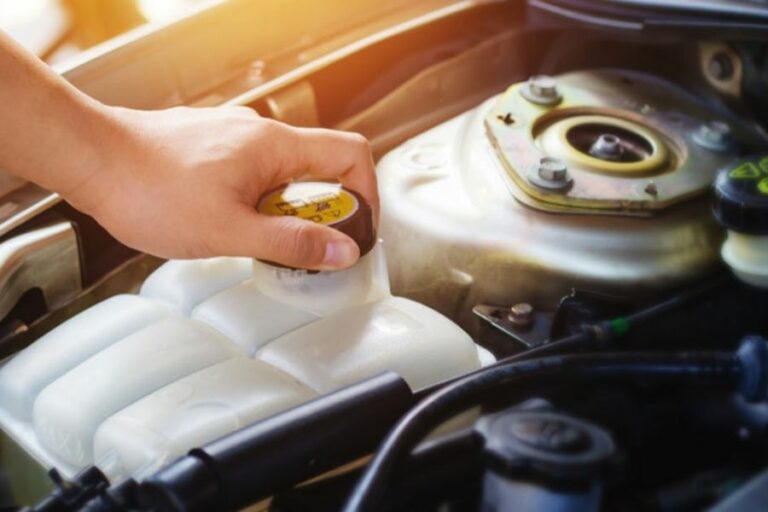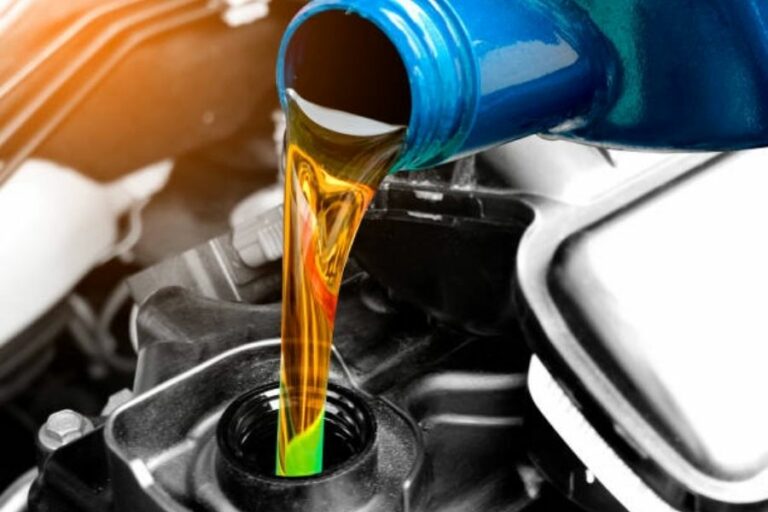You Should Check Your Windshield Wiper Fluid Level
Your windshield wipers are one of your car’s most important safety features – they help you see clearly in inclement weather and prevent accidents.
That’s why it’s important to regularly check your windshield wiper fluid level and top it off if necessary.
If you’re like most people, you probably don’t think much about your windshield wiper fluid. But did you know that it’s important to check your fluid level regularly? Your windshield wipers are one of the most important safety features on your car.
They help you see in inclement weather and keep your windshield clean. But they can’t do their job properly if the fluid level is low. Windshield wiper fluid is easy to check – just lift up the hood and locate the reservoir.
Most reservoirs have a fill line marked on them, so you’ll know how much fluid to add if it’s low. And it’s always a good idea to keep a spare bottle of windshield wiper fluid in your trunk, just in case.
So next time you’re under your hood, take a minute to check your windshield wiper fluid level. It could make all the difference when you need them most.
When Should You Check Your Windshield Wiper Fluid Level?
Most carmakers recommend checking and, if necessary, refilling the windshield washer fluid reservoir monthly.
Some automakers have a warning light to remind you. If your vehicle doesn’t have a low-fluid warning light, here’s how and when to check it:
- Park your car on level ground.
- Turn off the engine and open the hood.
- Find the windshield washer fluid reservoir; it’s usually marked with a blue or green cap that says “Washer Fluid.”
- Unscrew or pop open the cap and look at the level of fluid inside; if it’s below the “Full” line, add enough washer fluid until it reaches that line. You can use plain water in an emergency, but be sure to use proper windshield washer fluid next time you fill up so your wipers will work properly and won’t streak or chatter as they move across the glass.
How Do You Check Windshield Washer Fluid?
Assuming you have a standard windshield washer system, checking the fluid is easy. Simply look under the hood for the reservoir.
It is typically a translucent plastic container with markings that indicate the maximum and minimum fill lines.
If the fluid level is below the minimum line, add more washer fluid until it reaches the maximum line.
Also Read About: Does Windshield Wiper Fluid Expire?
You Should Check Your Windshield Wiper Fluid Level Every
We all know how important it is to keep our windshields clean. But did you know that you should also be checking your windshield wiper fluid level regularly?
Windshield wiper fluid helps to keep your windshield clear of debris and water, making it easier for you to see while driving.
It’s important to make sure that your fluid level is topped off so that your wipers can do their job properly. Here are a few tips on how to check your windshield wiper fluid level:
- Locate the Windshield Wiper Fluid reservoir. This is usually located underneath the hood of your car.
- Check the level of fluid in the reservoir. If it’s low, add more until it reaches the “full” line.
- Make sure to use the correct type of windshield wiper fluid for your car. Consult your owner’s manual if you’re not sure which one to use.
You’re now ready to take on whatever Mother Nature throws at you!
You Should Check Your Battery
Your car’s battery is one of the most important parts of your vehicle. Without it, your car won’t start. That’s why it’s important to check your battery regularly and replace it when necessary.
There are a few things you can do to extend the life of your battery:
Keep Your Battery Clean.
Dirt and grime can build up on the terminals and prevent the flow of electricity.
Keep it Charged.
A fully charged battery will last longer than one that is constantly running low.
Avoid extreme Temperatures
Extreme cold or heat can shorten the life of your battery. If you think your battery may be going bad, there are a few signs to look for:
- Your car won’t start as easily as it used to.
- The engine cranks slowly when you try to start the car.
- The headlights are dimmer than usual.
- You notice corrosion on the terminals (this may just be cosmetic, but it could also indicate a problem).
If you suspect that your battery is going bad, take it to a mechanic or auto parts store for testing and replacement if necessary.
Leaking Purple Fluid Indicates That You Should Check Your
If you notice a purple fluid leaking from your car, it’s important to take action right away. This could be an indication of a serious problem with your vehicle that needs to be addressed as soon as possible.
One potential issue that can cause this kind of leak is a faulty wheel cylinder. The wheel cylinder is responsible for providing hydraulic pressure to the brakes, so if it’s not working properly, your braking performance will suffer.
In addition, a leaking wheel cylinder can also damage other brake components and lead to even more problems down the road. Another possibility is that there’s a leak in your power steering system.
If this is the case, you’ll likely notice other symptoms like difficulty steering or strange noises coming from the engine compartment.
Again, this is something that should be fixed sooner rather than later to avoid further damage. If you see purple fluid leaking from your car, don’t ignore it!
Take the vehicle to a qualified mechanic and have them diagnose the problem so it can be fixed before it leads to bigger issues down the road.
Also Read: Windshield Wiper Fluid Not Coming Out
You Should Select Your Mechanic before You Experience Vehicle Failure
If you’re like most people, you wait until your car breaks down before you start thinking about finding a mechanic.
But it’s actually a good idea to select a mechanic before you experience vehicle failure. Why?
Because then you can be sure that you’re getting someone who is qualified and who you feel comfortable with. Here are some tips for choosing the right mechanic:
1. Ask around for recommendations
Talk to your friends, family, and co-workers and see if they have any recommendations for mechanics in the area.
2. Research online
Once you have a few names, do some research online. Read reviews from other customers and get an idea of what their experiences have been like.
3. Set up an appointment
Once you’ve narrowed it down to a few potential mechanics, set up an appointment so that you can meet them in person and get a feel for their business.
4. Ask questions
When meeting with potential mechanics, be sure to ask plenty of questions about their qualifications, experience, prices, etc.
You want to be sure that they’re the right fit for your needs before entrusting them with your car repairs!
Also Check: Is Windshield Wiper Fluid Universal
You Should Check Your Tire Pressure Blank
It’s important to check your tire pressure regularly. Low tire pressure can lead to a blowout, and high tire pressure can cause uneven wear on your tires.
Here’s how to check your tire pressure:
1. Use a Reliable Gauge
You can buy a digital or analog gauge at most auto parts stores
2. Remove the Cap From the Valve Stem on Your Tire.
Put the tip of the gauge onto the valve stem and press down firmly to get an accurate reading
3. Add Air to Your Tires
Compare the reading on the gauge with the recommended PSI for your tires (you’ll find this information in your owner’s manual or on a sticker inside your driver’s door).
If it’s lower than what’s recommended, use an air compressor or pump to add air to your tires until they’re inflated to the proper level.
If it’s higher than what’s recommended, let some air out of your tires until they’re at the correct pressure.
Clear Fluid Leaking Out of Your Car is Usually Coolant
If you notice a clear fluid leaking out of your car, it is most likely coolant. Coolant is an important part of the car’s cooling system, and it helps to keep the engine from overheating.
A leak in the cooling system can be dangerous, so it is important to have it checked out by a mechanic as soon as possible.
Check Washer Fluid Mercedes
If you own a Mercedes, it’s important to know how to check your washer fluid. This simple task can help keep your windshield clean and clear, and can even help prevent accidents. Here’s what you need to do:
- Open the hood of your Mercedes.
- Locate the washer fluid reservoir. It’s usually located near the radiator or engine compartment.
- Check the level of washer fluid in the reservoir. If it’s low, add more until it reaches the “full” line.
- Close the hood and wash your windshield as needed!
Where is the Rear Window Washer Fluid Reservoir Location
If your car has a rear window wiper, then it also has a rear window washer fluid reservoir. This is usually located in the same area as the front windshield washer fluid reservoir.
However, it may be located in a different part of the engine compartment, depending on your car’s make and model.
If you’re not sure where to find it, consult your car’s owner’s manual or ask a mechanic. To use the rear window washer, simply fill the reservoir with washer fluid and turn on the rear wiper.
The fluid will flow through a hose and onto the back window, helping to clean away any dirt or debris. When you’re done using the washer, be sure to turn it off so that you don’t waste any fluid.
Read More: Is Windshield Washer Fluid Flammable?
How To Check Your Washer Fluid Level
Conclusion
If you want to be a safe driver, it’s important to keep your windshield wipers in good condition. One thing you can do to ensure they work properly is to check your windshield wiper fluid level. This can be done by lifting up the hood of your car and finding the reservoir for the fluid.
The level should be between the “full” and “low” markings. If it’s low, simply add more fluid until it reaches the full mark.






